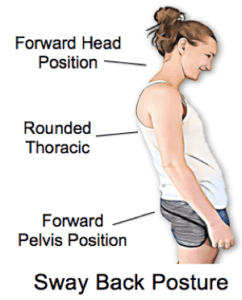Ankle sprains are one of the most common sports injuries; almost everyone has had one at some point in their lives. While they are common, they are notoriously not rehabbed well and ankle sprains are more likely if you have poor balance.
If an ankle sprain is not adequately healed or rehabilitated, it can lead to chronic ankle instability and further sprains.
Physiotherapy treatment for ankle injuries should include mobilisation, massage, range of motion and strengthening exercises and improving proprioception and control of the ankle.
Improving balance is an essential component in preventing ankle injuries and maintaining mobility.
What is an ankle sprain?
Ligaments are tough, fibrous tissues that connect bone to bone all over the body. Numerous ligaments in the ankle help to keep the bones in place and the joint stable. All activities, including standing, walking and running, require joint stability.
An ankle sprain happens when the strong ligaments that support the ankle stretch and tear. A sprain can range from mild to severe, depending on the extent of ligament damage.
If the ligaments are completely torn, the ankle may become unstable after the initial injury phase has passed. This instability can cause damage to the bones and cartilage, the smooth lining of the joint, over time.
What makes the ankles prone to injuries caused by lack of balance?
When standing on one foot, our ankles must support our weight. Our ankles can move from side to side and back and forth to provide us with agility and stability. A complex process is constantly at work to keep your foot in the proper position while supporting all of this weight, especially with quick changes of direction, activities done on tiptoe, jumping, and landing.
The ligaments outside the ankle can be damaged and torn if the ankle rolls excessively inwards or outwards. Keeping the ankle in the correct alignment and not twisting too far to either side during challenging activities requires balance.
A study of high school basketball players found that students with poor balance were up to seven times more likely than students with good balance to sprain their ankles. Other research has shown that balance training is an effective method of preventing falls in the elderly.
Balance can differ from one leg to the other
We all usually gravitate towards a specific side of our body for various activities; this is especially true in the upper body, as many people are typically left-handed or right-handed. This tendency also extends to our lower limbs: we tend to use one leg more than the other when it comes to balance exercises.
Consequently, one leg can become stronger and better balanced than its counterpart, thus making that limb susceptible to injuries due to overuse or strain.
When your balance is lacking, simple activities can become increasingly difficult as the muscles must work harder to keep up. However, improving your balance doesn’t just make everyday tasks easier – it also helps you perform more effectively without increasing muscle strength!
By honing in on this ability and ensuring that movements are fluid and efficient, you’ll be able to take advantage of better coordination for all performance-related activities.
Through targeted training, you can quickly attain balance
One of the most underappreciated aspects of fitness is balance. Fortunately, it’s easy to improve! Can you hold yourself on one leg for two minutes while closing your eyes? If not, then please focus on improving balance in your exercise routine.
To ensure this is adequately executed and to maximise results, consult a physiotherapist who can identify any deficits you may have and construct a training program tailored just for that purpose.
Physiotherapy treatment for ankle injuries
An exercise program that improves proprioception, strength, and ankle control will be critical to recovery. Exercises to increase mobility should also be considered to increase ankle joint range of motion.
Taping to support the ankle, ice, and anti-inflammatory medication can also help with initial pain management, if necessary.
An X-ray or scan may be required to diagnose further what is happening within the ankle if the injury is deemed more severe or is not improving. On the other hand, imaging is likely to be ineffective in less severe cases.

Final thoughts on poor balance and ankle sprains
Finding a balance can be essential to stand upright and to remain steady. Balance is necessary to prevent injuries, maintain mobility, and support proper posture.
Training that targets balance discrepancies can help improve ankle instability after an injury such as a sprain. By training your body’s sense of equilibrium through balanced activities, you are taking steps towards staying healthy overall!
Enhancing balance control is essential in sports and physical activity, as it correlates directly with higher athletic performance and fewer lower limb injuries. Improved stability is undeniably beneficial to athletes of all levels.






